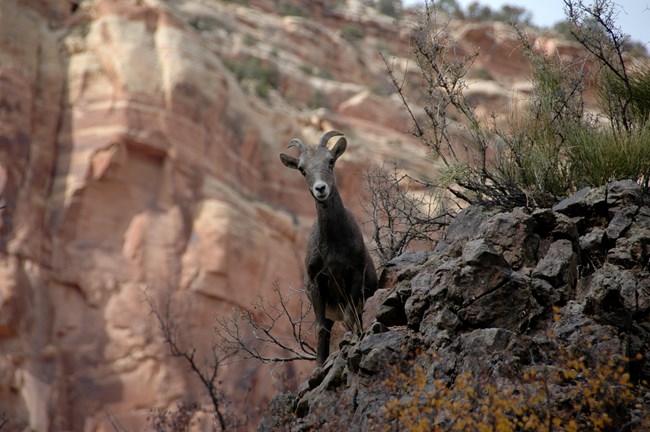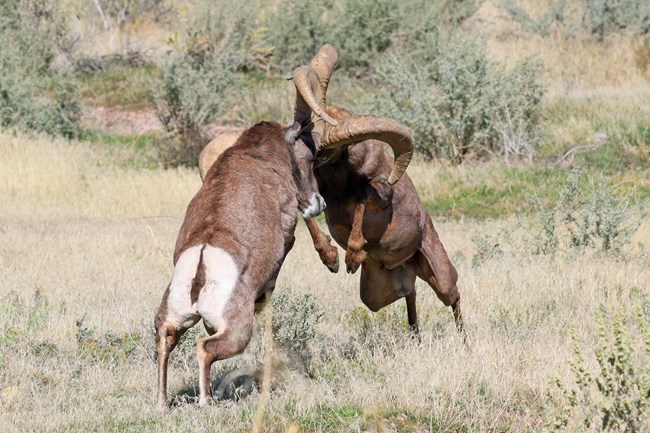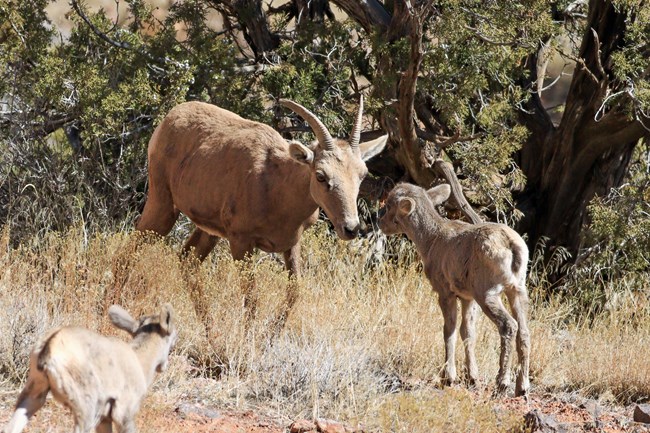
VIP Carla DeKalb Desert bighorn sheep are among the most intriguing mammals of canyon country. They are wary of human contact and blend so well into the terrain they inhabit that sightings are a special event. Once in danger of becoming extinct, the desert bighorn sheep (Ovis canadensis) have made a comeback in parts of western Colorado. A small population was reintroduced to Colorado National Monument in 1979. Over 230 sheep have been sighted and monitored across the public lands of the Grand Valley, including Colorado National Monument and the neighboring McInnis Canyons wilderness area. 
Sally Bellacqua Unlike their Rocky Mountain bighorn cousins, desert bighorn have adapted to hot, dry climates. They have longer legs, lighter coats, and smaller bodies. They can live without water for days, losing body weight in the process. Their diet of shrubs, grasses, brome, fescue, clover phlox, and cinquefoil supplies a good portion of their water needs. Desert bighorn will drink water from potholes in the rocks and from the seasonal streams in the monument. Easily accessible water is a scarce resource in this desert environment. 
VIP Carla DeKalb The rut for desert bighorn sheep takes place from August through the early fall. The bachelor herds that form during the winter and spring break up, and rams search for ewes while keeping a sharp eye out for each other. Rams are fiercely competitive in gathering herds and fighting for mating rights. They square up with each other, charge, and bash their heads together. Fortunately, a ram's thick skull helps to cushion his brain from the impact of butting heads with other sheep. Listen carefully, you can sometimes hear the loud crack of their horns hitting each other from a good distance away. 
VIP Carla DeKalb Young rams also stay with the main herd, eventually splitting off into bachelor herds when they are a few years old. Rams typically stay in bachelor herds during the spring and summer, rejoining the ewes for the rut. If all goes well, they can live to be 10 to 14 years old. 
Sally Bellacqua Bighorn sheep are common in American Indian rock art, an indication of their presence and importance in indigenous cultures. Desert bighorn are an important game animal and resource for the Ute people. Accounts from European explorers in the late 1600s estimate that more than two million desert bighorn once roamed the Southwest. 
VIP Carla DeKalb Look for desert bighorn sheep along ledges at the base of canyon walls and above steep talus slopes. Desert bighorn are commonly seen along Rim Rock Drive in Fruita Canyon, near Balanced Rock View, and year-round in Kodels, Monument, and Wedding Canyons, which require hikes varying from 2-12 miles round-trip. More Desert Bighorn Sheep Info from NPS |
Last updated: April 29, 2025
